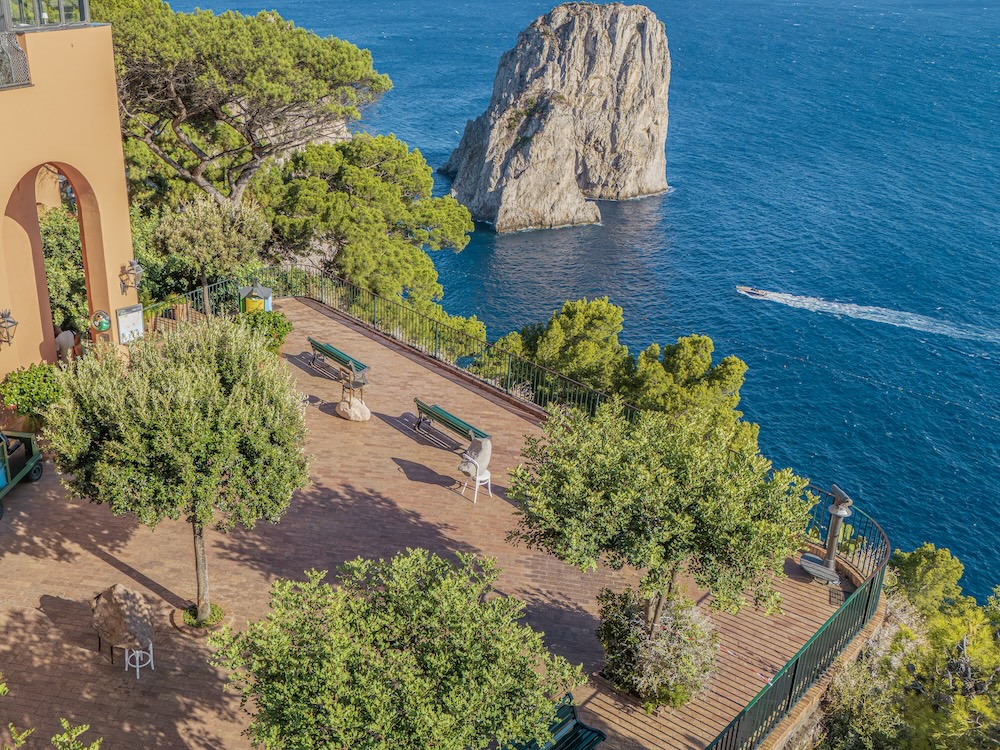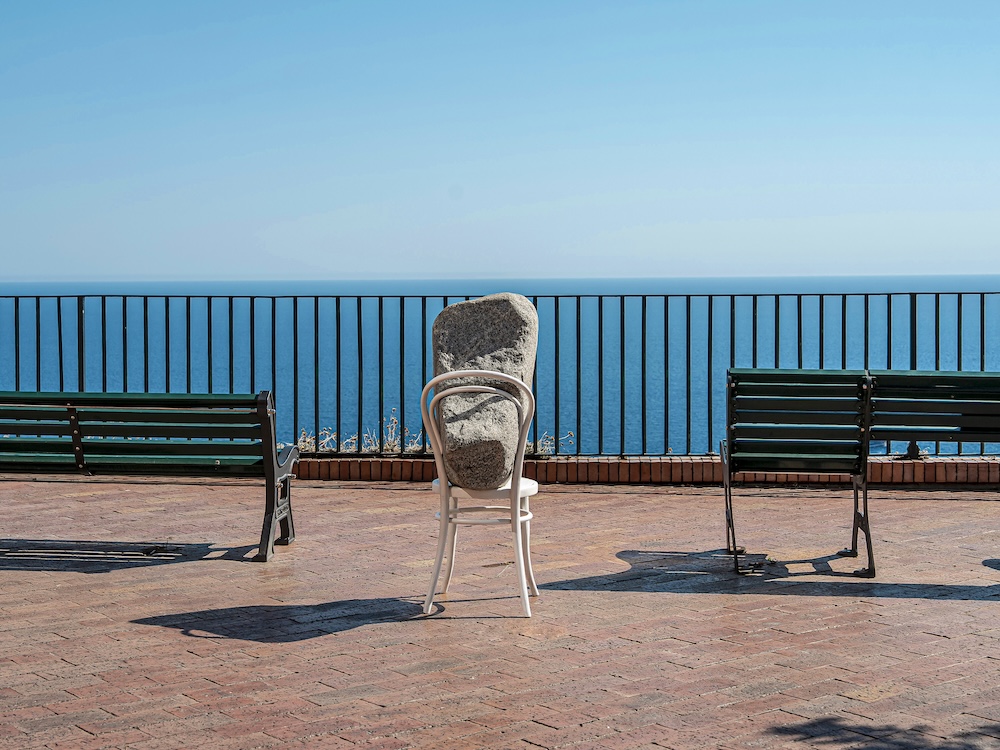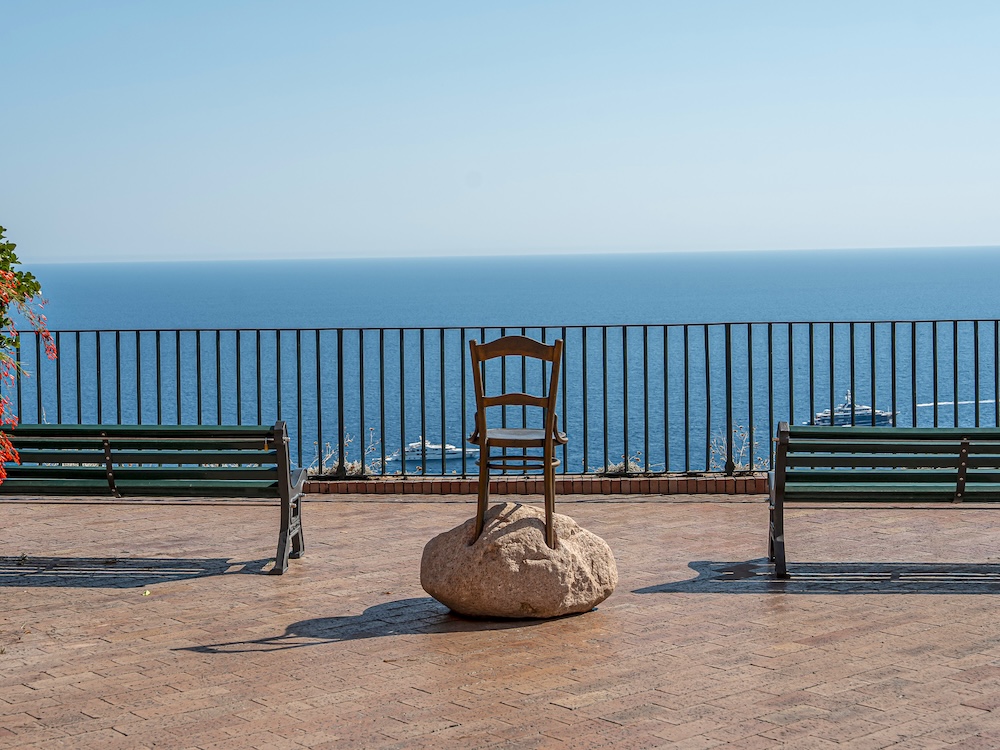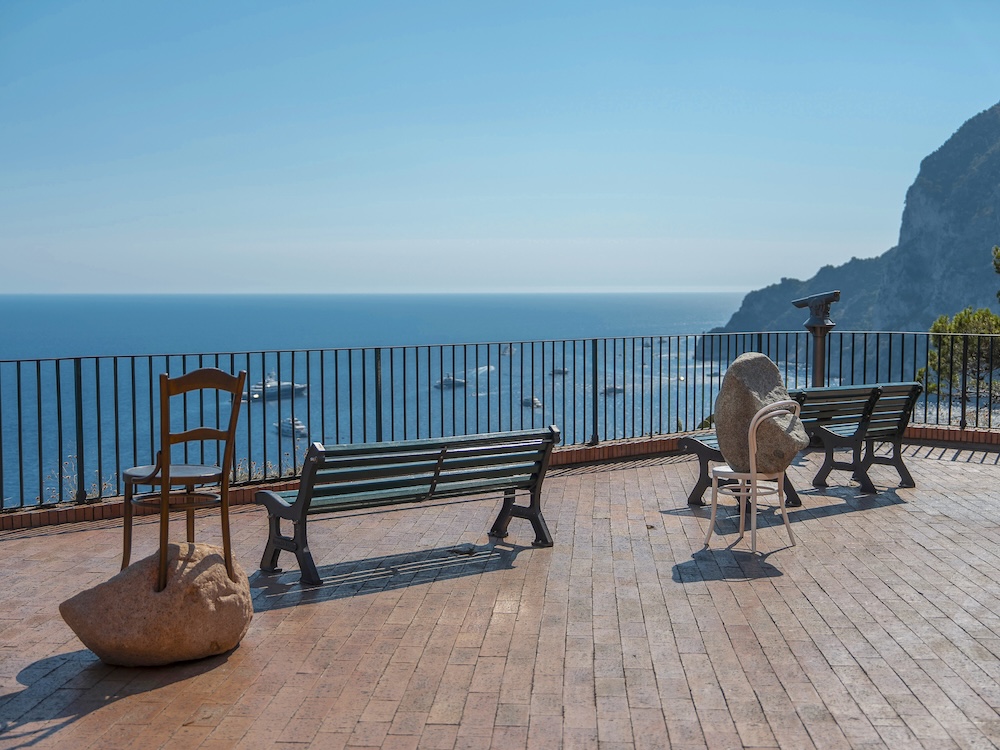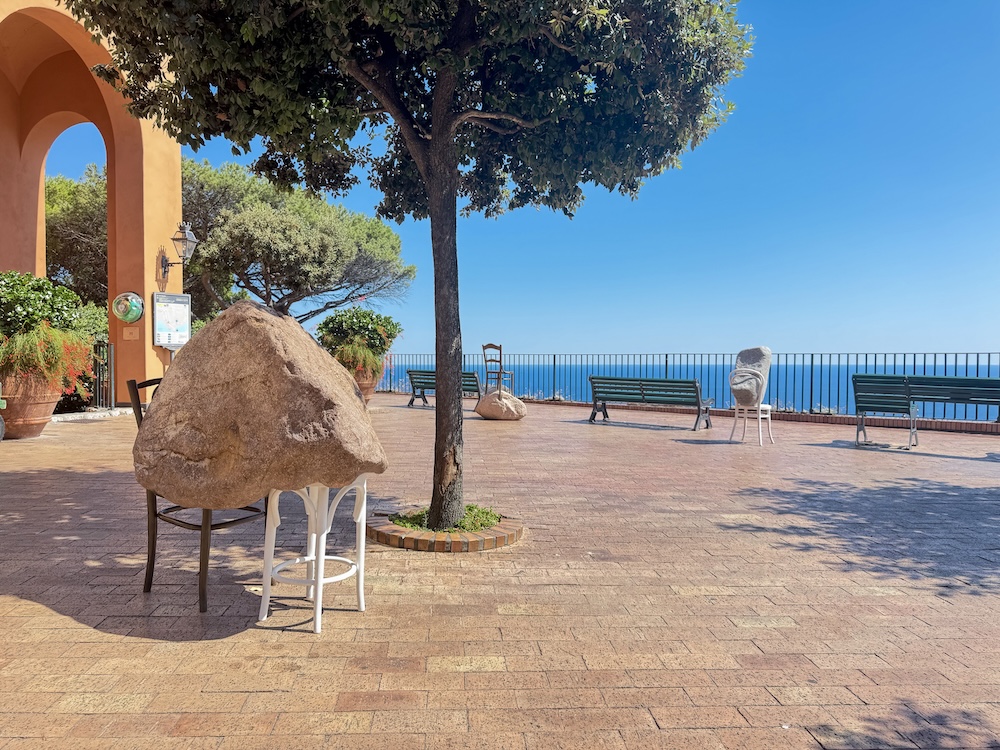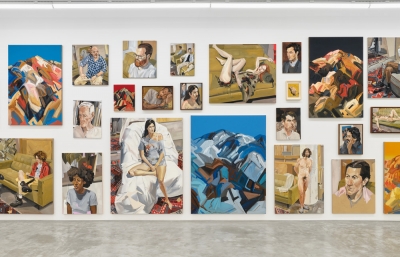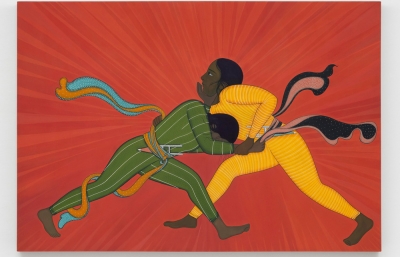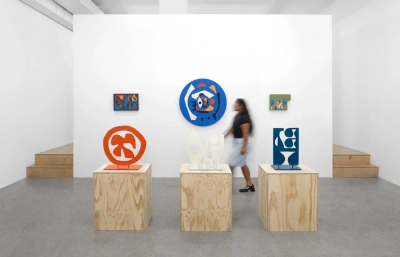If you happen to be at Belvedere Tragara on the Island of Capri, Italy, Plan X Gallery in collaboration with the City of Capri have collaborated (along with Pace Gallery) on Alicja Kwade's Geologies of the Impossible.
The Belvedere of Tragara opens toward the horizon — a liminal space where landscape, time, and gaze dissolve into one another. Within this setting, Alicja Kwade intervenes with a gesture that is neither decorative nor functional: three bronze chairs, part of her Carrier and Double Carrier series, are obstructed by blocks of raw stone — archaic matter that dismantles the expected relationship between object and purpose.
The stone — unrefined, primordial — interrupts usability. A chair, designed to receive the human body, becomes the bearer of a weight not its own. Nature intrudes upon culture. What remains is a suspended moment between form and resistance — between possibility and assertion.
This tension unfolds not only within the object, but in dialogue with its surroundings. The three sculptures echo the Faraglioni, the iconic rock formations off Capri’s coast — as if a mirrored force had shifted elements from the sea to land. In these works, two worlds collide: the geological and the manufactured, the eternal and the designed. Kwade places stone and chair in direct confrontation — mass against function, time against intention.
Her practice probes the fractures between perception and reality, between what appears measurable and what resists comprehension. The sculptures do not passively inhabit space — they alter its meaning. They do not invite us to sit, but to think.
Geologies of the Impossible thus becomes a reflection on the limits of inhabiting: not just places, but ideas. This is not rest in the traditional sense, but a mental suspension — a stillness charged with weight, material, and relation. The works resist resolution, yet insist on presence.



